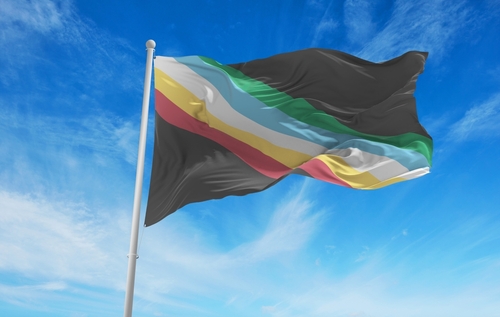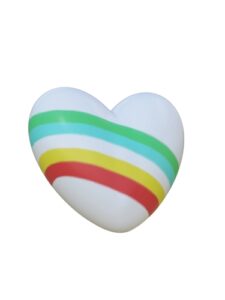July is recognized as Disability Pride Month. This annual celebration of differing abilities connects back to the passing of the Americans with Disabilities Act (ADA), the landmark ruling that prohibits discrimination against people with disabilities. Many years passed before a much-needed disability pride flag was created. Need help decoding the inclusive design? Here’s what the disability pride flag represents…
History of the Disability Pride Flag
Ann Magill, a writer who has cerebral palsy, was in grad school when ADA became law in July 1990. Often penning work on disability and social equality, she had a knack for flagging injustices. In 2010, she attended an underwhelming event for the 20th anniversary of the ADA. The lackluster celebration, in her opinion, did not garner the attention needed to strengthen awareness and acceptance of people with disabilities. She visualized making a disability pride flag and, finally, was fiercely motivated to do so following a horrific attack on a disabled-serving facility in Japan in 2016.
“My first design idea was to make the stripes zigzag… to represent how disabled people have to maneuver around all the barriers we face. We have to go this way, and then we have to go that way, and then we have to go this way and then we have to go that way. And that’s how we move through the world,” Magill described on The Accessible Stall podcast. The disability pride flag started to go viral in 2019.

Members and allies of the disability community praised the flag’s concept yet offered constructive feedback. While well-intentioned, the bold colors and zigzag construction of the initial design caused a strobe-like effect on computer and phones screens which was off-putting for those with migraines, seizures, sensory sensitivities and other conditions. Thus, in 2021, Magill unveiled an updated and more accessible design of the disability pride flag featuring muted hues and softer angles.
“I think it’s even better this way because it truly represents the community because the community came together to solve a problem,” Magill explained on the podcast.
Understanding the Disability Pride Flag
Flags are traditionally flown to proudly signify nations and/or cultures. Flags also symbolize other types of identities, beliefs and, yes, pride. A couple of commonly recognized flags, for example, are the pride flag (rainbow banner honoring the LGBTQ+ community) and the Juneteenth flag (red and blue banner with bursting white star representing the end of slavery in the United States).
Here’s what the disability pride flag represents:
- Black: The black background, which is more so like a faded charcoal base, ignites the mourning of disabled persons victimized by ableism or lost to disability-fueled violence, abuse/negligence and death. The dark shade also illuminates the rage and protest against the mistreatment of people with disabilities.
- Diagonal band: The light, connected band of stripes cut straight through the darkness (i.e., barriers). The slanted formation is a symbolic contrast to the vertical walls and horizontal ceilings that resonate with feelings of isolation among some members of the disability community.

- Multi-colored: The disability pride flag includes all six standard international flag colors to denote that the disability community is wide-reaching and on a global scale. Regarding the flag’s redesign, Magill explained in a Reddit post that the warm and cool colors were grouped separately on either side of a white stripe to “lessen the chance of a flicker effect when scrolling online, lessen a nausea trigger for those who suffer from migraines and separate the red and green stripes for those with color blindness.”
- Green: This stripe signifies sensory disabilities, including blindness, deafness, lack of smell, lack of taste and other sensory conditions.
- Blue: This stripe represents those with psychiatric disabilities, such as anxiety, depression and other mental disorders.
- White: This central stripe connects to persons with invisible disabilities and/or undiagnosed conditions.
- Gold: This stripe signifies those with cognitive and intellectual disabilities and other neurodivergence.
- Red: This final line denotes persons with physical disabilities.
Magill waived copyright and entered this disability pride flag into the public domain in an effort to encourage everyone – with and without disabilities — to promote and use the symbolic design. So, are you using the disability pride flag this month (and beyond)? Disability pride, of course, is a year-round movement! And your participation is needed.







